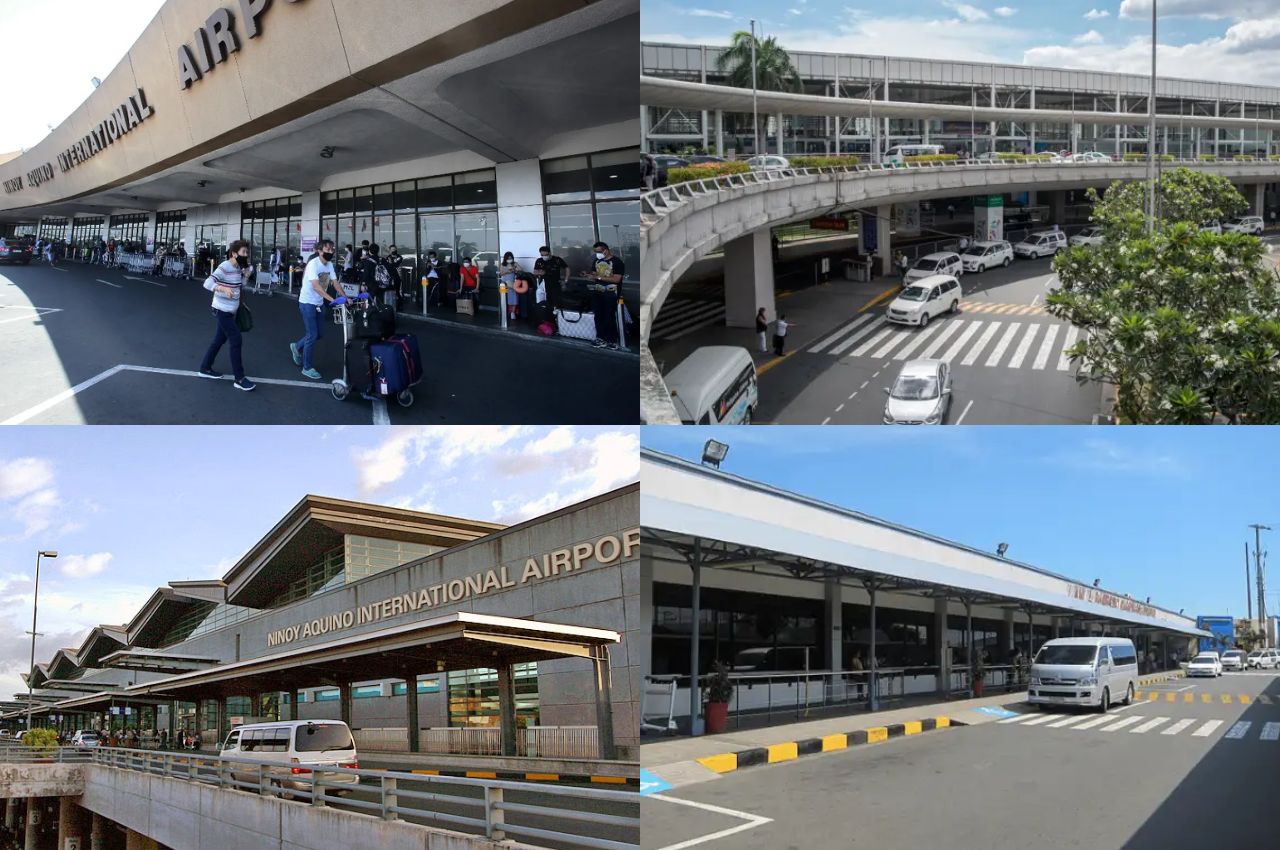Airports, the bustling gateways to the world, serve as crucial connectors for global travel and play a pivotal role in shaping our modern society. Beyond their utilitarian function of facilitating air travel, airports have transformed into architectural wonders, cultural showcases, and economic powerhouses.
Airports worldwide have transcended their traditional role to become remarkable destinations in their own right. From breathtaking architecture and avant-garde art to cultural immersion and technological innovation, these airports exemplify the spirit of their respective regions. As travelers continue to crisscross the globe, these gateways will continue to evolve, captivating visitors with their grandeur and leaving an indelible mark on the world of aviation.
Remarkable Airports Around the Globe
Changi Airport, Singapore
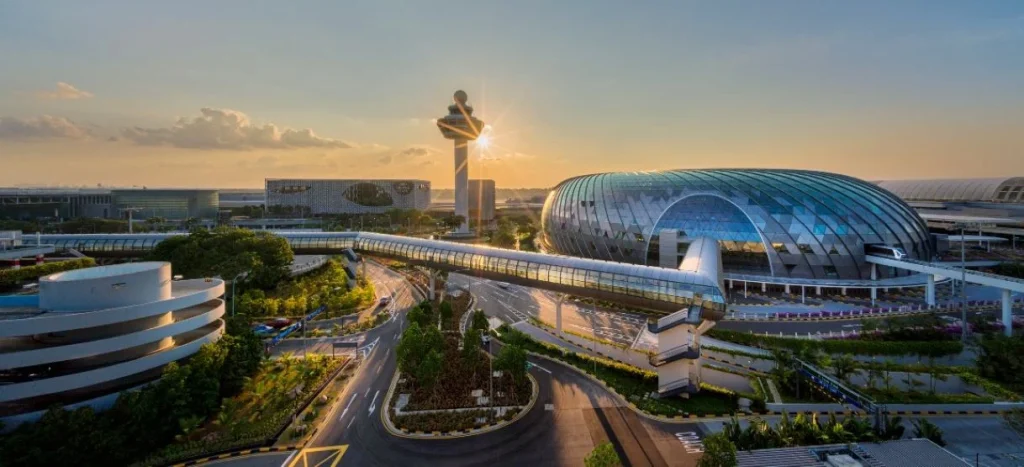
photo from: changiairport.com
A Paradise in Transit Topping the list of remarkable airports is Singapore’s Changi Airport, an unrivaled gem. Renowned for its world-class facilities and seamless passenger experience, Changi Airport has earned the title of the world’s best airport for ten consecutive years. From the enchanting butterfly garden and rooftop swimming pool to the jaw-dropping Jewel Changi, an indoor forest with the world’s tallest indoor waterfall, this airport goes above and beyond to captivate and delight travelers.
Incheon International Airport, South Korea
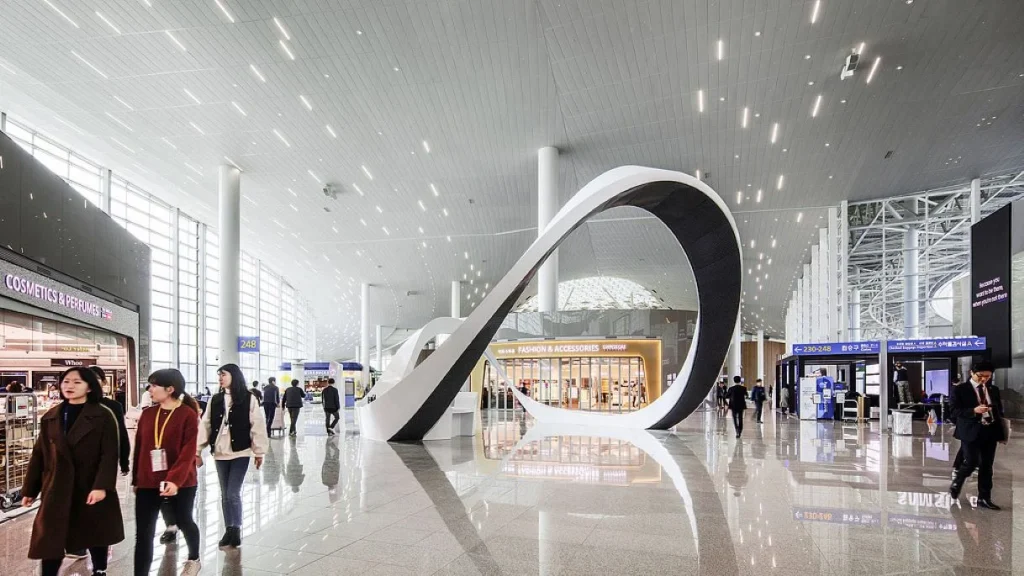
photo from:gensler.com
Where Innovation Meets Culture Nestled on the outskirts of Seoul, Incheon International Airport is a testament to South Korea’s technological prowess and rich cultural heritage. Its architectural brilliance and technological advancements seamlessly blend with Korean art and culture. Passengers can indulge in traditional performances, visit the Korean Culture Museum, or enjoy a stroll through the airport’s beautiful gardens. With its commitment to passenger comfort and efficiency, Incheon International Airport has set new standards for airport excellence.
Dubai International Airport, UAE
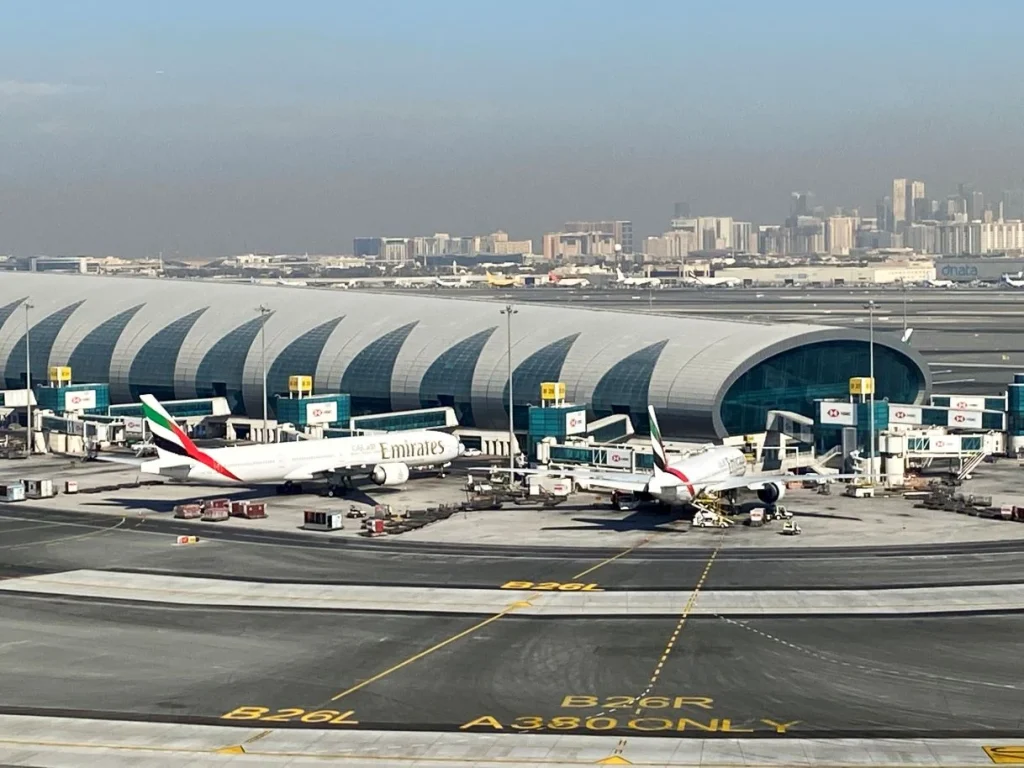
photo from:reuters.com
The Epitome of Opulence In the heart of the Middle East, Dubai International Airport stands as a symbol of opulence and luxury. A hub for global connections, this airport embodies grandeur with its lavish shopping arcades, duty-free outlets, and extravagant lounges. Terminal 3, the largest airport terminal in the world, features awe-inspiring architecture and hosts the renowned Emirates Airlines. Beyond its sheer scale, Dubai Airport offers a glimpse into the city’s cosmopolitan vibe, making every transit a memorable experience.
Denver International Airport, USA
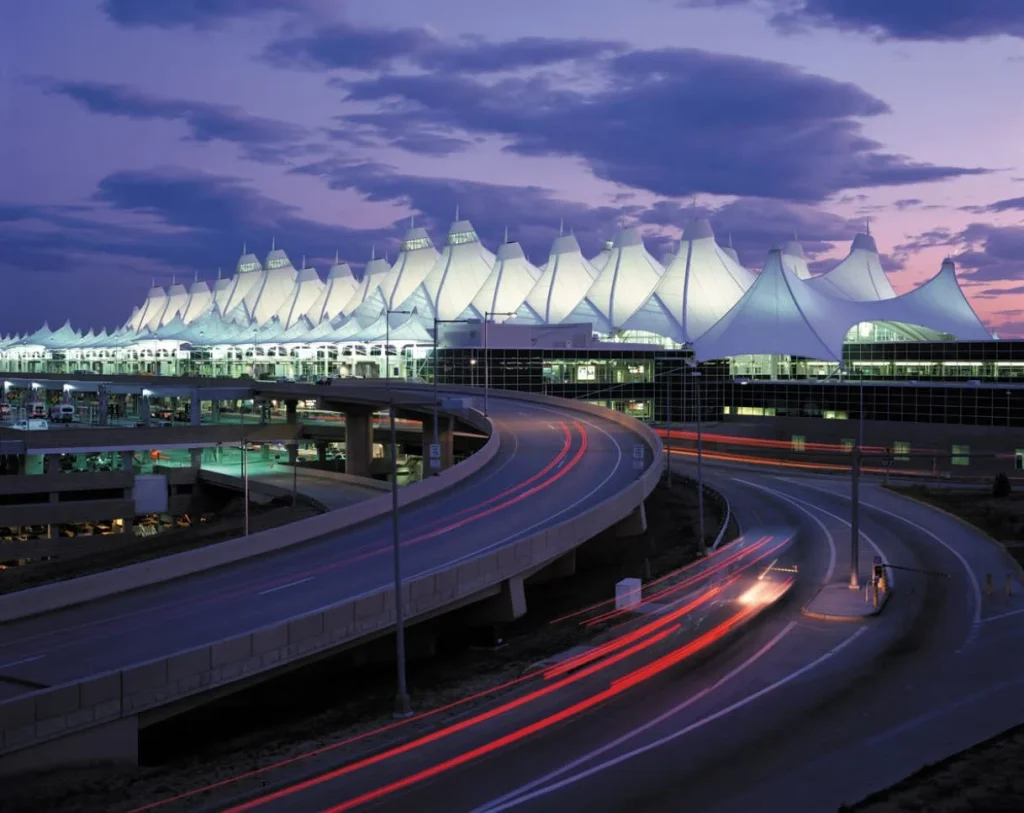
photo from: denver.org
Where Art Takes Flight Denver International Airport in Colorado, USA, challenges traditional notions of an airport by seamlessly blending aviation with art. This airport boasts one of the most extensive airport art programs globally, featuring mesmerizing sculptures, murals, and installations that celebrate the region’s natural beauty and cultural diversity. The iconic “Mustang” sculpture and the vibrant “Great Hall” murals are just a glimpse of the artistic wonders that greet visitors, transforming the airport into an open-air gallery.
Istanbul Airport, Turkey
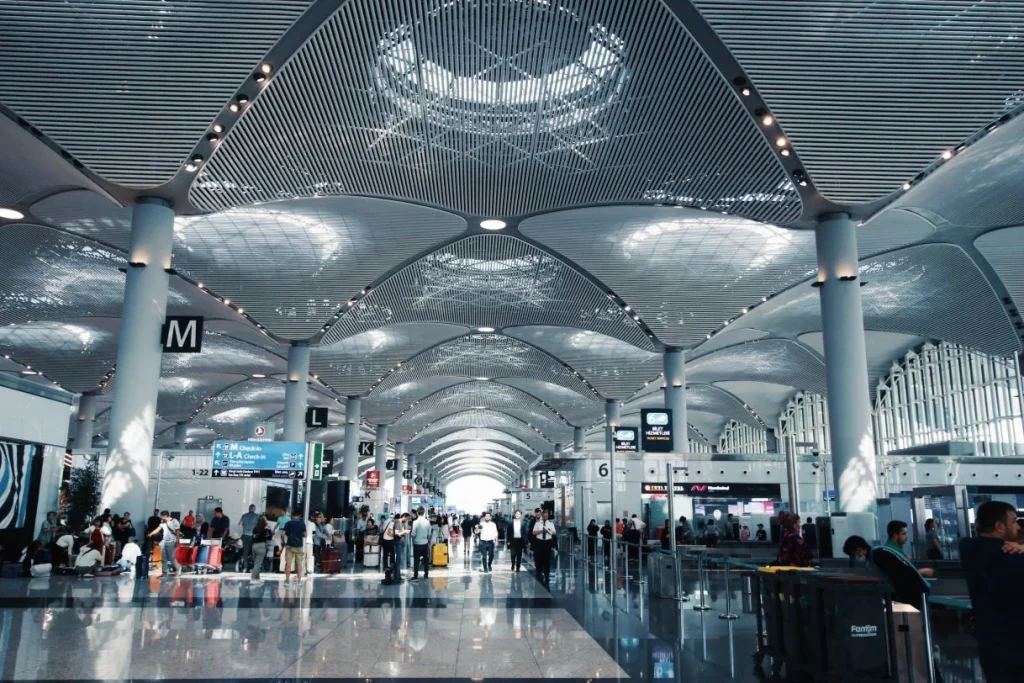
photo from: helvar.com
A Gateway to the East and West As a bridge between Europe and Asia, Istanbul Airport showcases the city’s unique cultural blend. Opened in 2019, this modern marvel aims to be the largest airport in the world upon completion. Istanbul Airport blends stunning architecture with Turkish traditions, offering passengers a chance to experience Turkish cuisine, handicrafts, and music. With an emphasis on efficiency and technology, Istanbul Airport represents the harmonious convergence of history and progress.
Gateway to the Beauty of the Philippines with Ninoy Aquino International Airport

Nestled in the heart of Manila, the capital city of the Philippines, the Ninoy Aquino International Airport (NAIA) stands as a vital gateway to the archipelago’s natural wonders, cultural heritage, and warm hospitality. Named after the revered Filipino senator and national hero, Benigno “Ninoy” Aquino Jr., this airport serves as a vibrant hub connecting the Philippines to the rest of the world.
After the war, the Philippine government recognized the need for a commercial airport to accommodate the growing air traffic. In 1948, the Manila International Airport (MIA) was established on the site of Nichols Field, becoming the country’s first international airport. Over the next few decades, Manila International Airport Authority underwent expansion and modernization efforts to meet the increasing demands of international travel.
As air travel continued to grow, NAIA underwent several expansion projects to meet the demands of increasing passenger traffic. Terminal 1, designed by Filipino architect Leandro Locsin, was completed in 1981 and became the primary international terminal. Terminal 2, also known as the Centennial Terminal, opened in 1999 and became the exclusive hub for Philippine Airlines. NAIA Terminal 3, the newest and largest terminal, was inaugurated in 2008 to accommodate both domestic and international flights.
As a tourist planning a visit to the captivating archipelago of the Philippines, one of the first or only airport points of contact will likely be the Ninoy Aquino International Airport (NAIA). Situated in Manila, the bustling capital city, NAIA is the main international gateway and serves as the primary gateway to the country’s breathtaking landscapes, international cargo terminal vibrant culture, and warm hospitality. In this comprehensive guide are the essential information and tips to navigate NAIA seamlessly, ensuring a smooth and enjoyable start to your Philippine adventure.
NAIA International Airport Layout and Terminals:
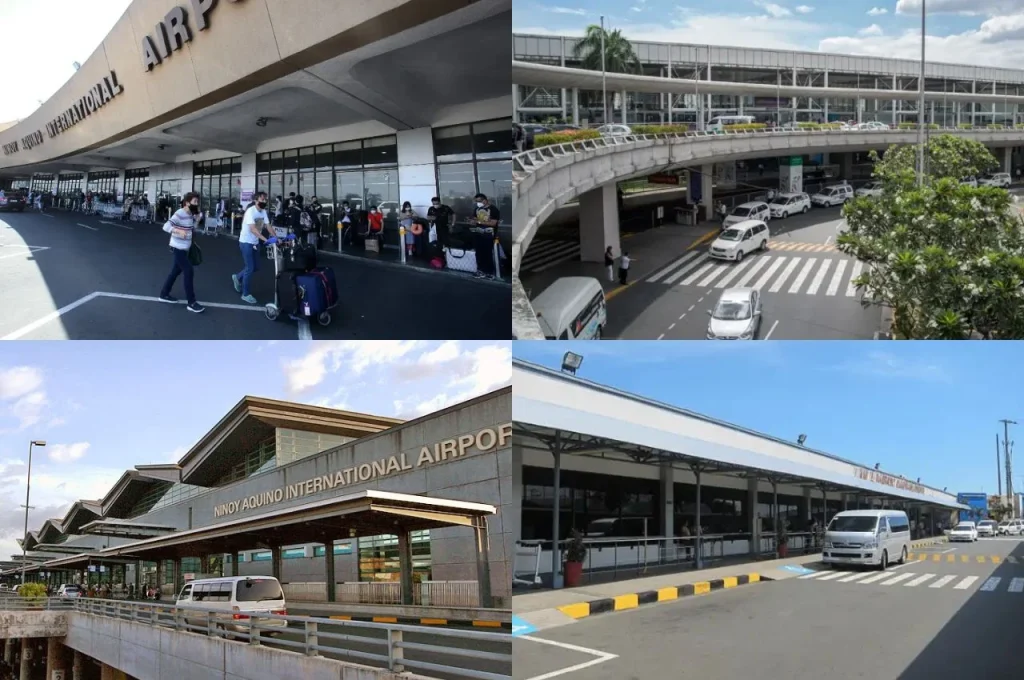
photo from: NAIA Terminal 1 (upper left): rappler.com | NAIA Terminal 2 (upper right) traveloka.com | NAIA Terminal 3 (lower left) philippineflightnetwork.com | NAIA Terminal 4 (bottom right) traveloka.com
NAIA is comprised of four terminals, each catering to different airlines and destinations. Terminal 1 serves international flights, Terminal 2 (also known as the Centennial Terminal) is exclusive to Philippine Airlines, NAIA Terminal 3 handles both international and domestic flights, and Terminals 3 and 4 (also known as the Domestic Terminal or Manila Domestic Passenger Terminal) is dedicated to domestic carriers. It is essential to determine your airline and terminal beforehand to ensure a hassle-free experience.
Immigration and Customs in the Manila International Airport
Upon arrival, you will proceed through immigration and customs. Have your passport, completed arrival card, and necessary documents ready. Ensure you meet the entry requirements, such as a valid visa if applicable. The immigration process usually involves fingerprint scanning and a brief interview. After clearing immigration, collect your luggage and proceed to customs for inspection. Familiarize yourself with the customs regulations to avoid any issues.
Ground Transportation
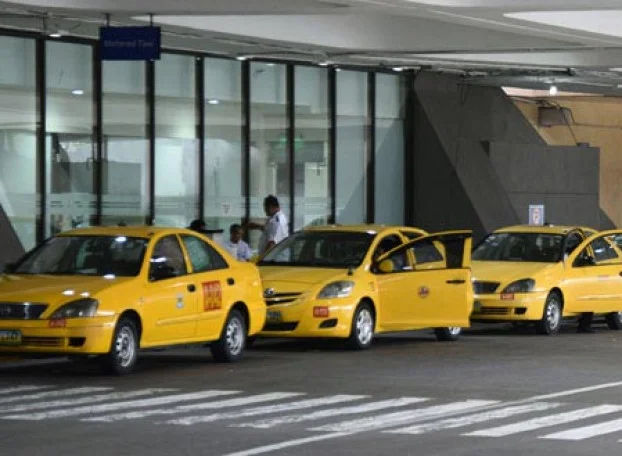
photo from: seamanrepublic.com
NAIA offers several options for ground transportation, including taxis, ride-sharing services, airport shuttles for the ultimate bus experience, and public transportation. Metered taxis are available at each airport road and designated taxi stands outside each terminal. Ensure the driver uses the meter or negotiates the fare upfront. Ride-sharing services like Grab are convenient and offer fixed fares. Public transportation, such as the airport shuttle buses and the Metro Rail Transit (MRT), provide economical options for reaching your destination.
Currency Exchange and Facilities in the Manila Airport
NAIA provides currency exchange services throughout the passenger terminals here. It is advisable to exchange a small amount for immediate needs, as better rates can often be found outside the airport. Additionally, ATMs are available for cash withdrawals. The whole airport complex features various facilities, including duty-free shops, free wifi zones, medical services restaurants, lounges, prayer rooms, and baggage storage services. Take note of the amenities and services specific to each terminal.
Accommodation and Transfers
If your arrival time necessitates an overnight stay near the airport, numerous hotels are located in close proximity, offering shuttle bus services for convenience. Pre-book your accommodation to ensure a smooth transfer and a comfortable stay. Many hotels also provide airport transfers, saving you time and hassle.
Connecting Flights and Layovers
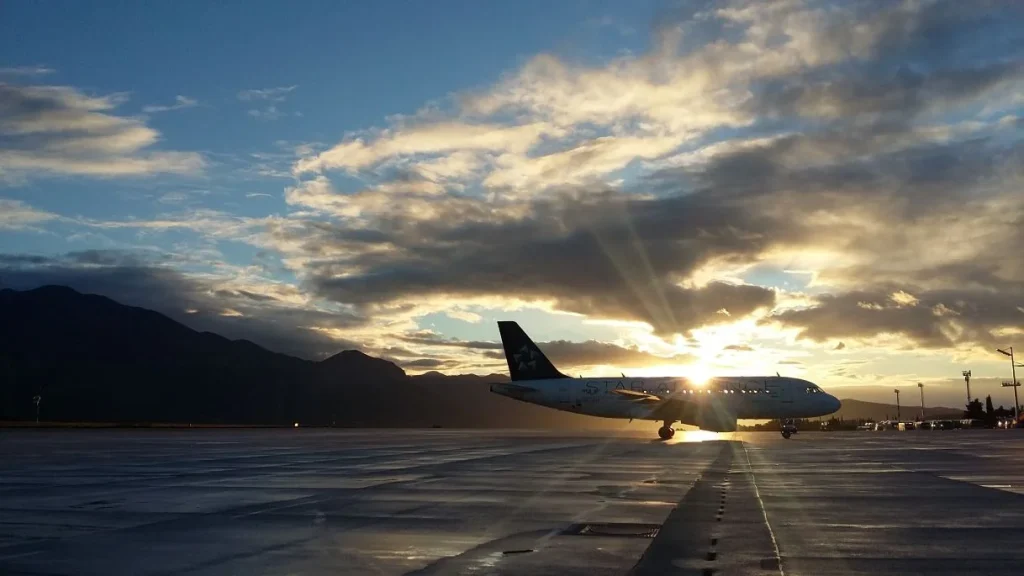
NAIA is a common hub for regional and international connections. If you have a layover or a connecting flight, be mindful of the time required for transit and any visa requirements. Allow ample time to clear immigration, collect baggage, and check in for your onward flight. Note that some airlines and flights may require terminal changes, so check with your airline or consult airport signage for guidance.
Safety and Security
Like any major airport, it is essential to remain vigilant and practice common safety precautions at the NAIA terminal. Keep your belongings secure, be cautious of your surroundings, and avoid displaying valuable items. Follow airport regulations and be aware of any travel advisories or security alerts that may affect your journey.
Tips for a Smoother Experience at NAIA
As one of the busiest airports in Southeast Asia, Ninoy Aquino International Airport (NAIA) can be a bustling and hectic place. Whether you are a first-time traveler or a frequent flyer, having a few tips up your sleeve can make your experience at NAIA more seamless and enjoyable. From pre-departure preparations to post-arrival arrangements, here are some essential tips to help you navigate NAIA with ease.
Plan Ahead

Before heading to the NAIA terminal, make sure you have all the necessary travel documents, such as your passport, visa (if required), and flight details. Check out your airline’s website or contact them directly for any specific requirements or updates. Familiarize yourself with the terminal you’ll be departing from or arriving at, as NAIA consists of multiple terminals.
Allow Sufficient Time
NAIA terminals can get busy, especially during peak travel periods. To avoid unnecessary stress, arrive at the airport well in advance of your scheduled departure time. For domestic flights, it is recommended to be at the airport at least two hours before your flight, while for international flights, allow at least three hours.
Choose the Right Terminal and Check-In
Ensure you know which terminal your airline operates from, as NAIA has separate terminals for domestic and international flights. Double-check your ticket or contact your airline to confirm the terminal. Once you arrive, proceed to the appropriate check-in counters. Many airlines now offer online check-in services, allowing you to save time and bypass long queues.
Be Aware of Baggage Regulations: Familiarize yourself with the baggage regulations of your airline and destination. Ensure your luggage complies with size, weight, and prohibited item restrictions. Securely label your bags with your contact information. It’s also a good idea to have a carry-on bag with essential items such as travel documents, medications, and valuables.
Stay Connected and Charged

NAIA provides free Wi-Fi access, so take advantage of it to stay connected. Make sure your electronic devices are fully charged before you arrive, or bring portable chargers to keep them powered during your time at the airport. Charging stations are available in some terminals, but it’s always good to be prepared.
Explore Dining and Shopping Options
NAIA offers a range of dining and shopping options to keep you entertained and satiated during your wait. Take the opportunity to sample local cuisine or indulge in international flavors. Browse through duty-free shops for souvenirs or last-minute purchases. However, be mindful of your time and keep an eye on your boarding gate announcements.
Relax in Airport Lounges
If you have access to airport lounges through membership or airline status, take advantage of their amenities. Lounges offer comfortable seating, refreshments, and Wi-Fi access, providing a tranquil space to relax or catch up on work before your flight.
If you prefer to avoid the busy streets of the Metro Manila Area, situated in the vibrant city of Las Piñas, just a stone’s throw away from NAIA are the condo units that offer the perfect blend of accessibility and modern living. With thoughtfully planned layouts and stylish interiors, these units provide a welcoming ambiance for residents. The proximity to the airport ensures that passengers connecting can easily catch their flights without the hassle of long commutes. Additionally, the surrounding area is replete with amenities such as shopping centers, restaurants, and leisure facilities, providing residents with a host of conveniences right at their doorstep. The condo in Las Piñas near NAIA offers a prime opportunity for individuals seeking a comfortable and well-connected living space in a thriving neighborhood.
Follow Security Protocols
To ensure a smooth passage through security checkpoints, follow the guidelines and instructions provided. Remove laptops and liquids from your bag, and be prepared to undergo security screening procedures. Wear easily removable footwear to expedite the process. Remember to pack any liquids in containers of 100ml or less in a clear, resealable plastic bag.
Stay Informed
Pay attention to airport announcements, information boards, and screens displaying flight updates. Stay informed about any changes or delays to your flight. If you have any concerns or require assistance, don’t hesitate to approach airport staff, who are readily available to help.
Ninoy Aquino International Airport serves as the gateway to the captivating Philippines, where the vast majority of pristine beaches, lush mountains, and vibrant cities await exploration. Armed with this comprehensive guide, you are well-equipped to navigate NAIA as a tourist, ensuring a smooth and enjoyable start to your Philippine adventure. Embrace the warmth and charm of an airport serving the Filipino people, immerse yourself in the country’s rich cultural tapestry, and prepare to embark on an unforgettable journey of discovery.
Related Blog: Why Buying a Condo Near an Airport is Your Best Next Move


